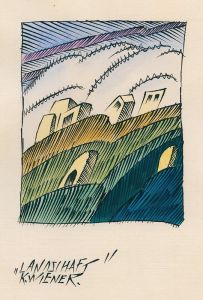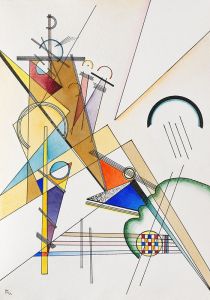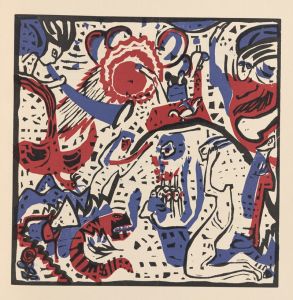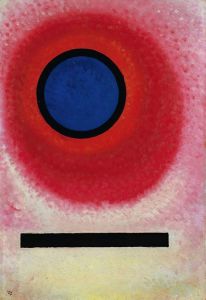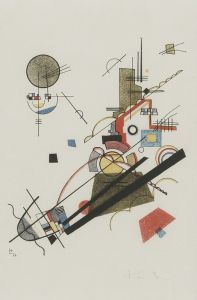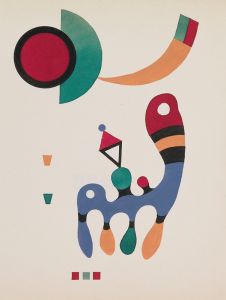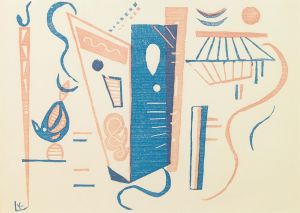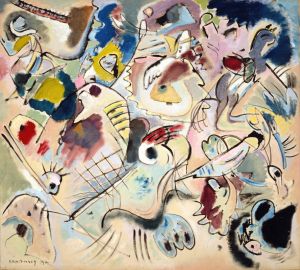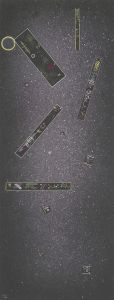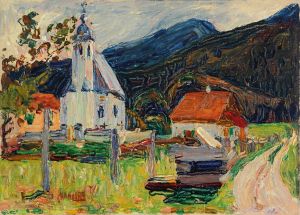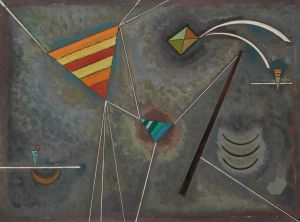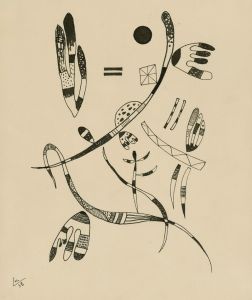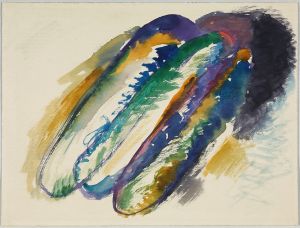
Klänge Pl.18
A hand-painted replica of Wassily Kandinsky’s masterpiece Klänge Pl.18, meticulously crafted by professional artists to capture the true essence of the original. Each piece is created with museum-quality canvas and rare mineral pigments, carefully painted by experienced artists with delicate brushstrokes and rich, layered colors to perfectly recreate the texture of the original artwork. Unlike machine-printed reproductions, this hand-painted version brings the painting to life, infused with the artist’s emotions and skill in every stroke. Whether for personal collection or home decoration, it instantly elevates the artistic atmosphere of any space.
Wassily Kandinsky, a pioneering figure in abstract art, created "Klänge Pl.18" as part of his broader exploration into the relationship between color, form, and sound. Kandinsky, born in Moscow in 1866, was a Russian painter and art theorist who is often credited with painting one of the first purely abstract works. His work in abstraction was heavily influenced by his synesthetic experiences, where he could perceive sounds as colors and shapes, a phenomenon that deeply informed his artistic philosophy and output.
"Klänge" (meaning "Sounds" in German) is a significant work in Kandinsky's oeuvre, as it is a collection of woodcuts and prose poems published in 1913. This portfolio is considered one of the most important early examples of a Gesamtkunstwerk, or a total work of art, combining visual art and literature. The collection consists of 56 woodcuts and 38 prose poems, showcasing Kandinsky's innovative approach to integrating different art forms.
Plate 18 of "Klänge" is one of these woodcuts, reflecting Kandinsky's interest in the synthesis of art and music. While specific details about "Klänge Pl.18" are limited, the work as part of the "Klänge" series embodies Kandinsky's abstract style, characterized by bold colors, dynamic compositions, and a departure from representational art. The woodcuts in "Klänge" are noted for their expressive use of line and form, often evoking a sense of rhythm and movement akin to musical compositions.
Kandinsky's work during this period was heavily influenced by his theoretical writings, particularly his book "Concerning the Spiritual in Art," published in 1911. In this text, Kandinsky articulated his belief in the spiritual power of art and its ability to convey deep emotional and intellectual experiences. He argued that abstract art could transcend the material world and communicate directly with the viewer's soul, much like music.
The "Klänge" series, including Plate 18, reflects these ideas by using abstraction to evoke emotional responses rather than depict the physical world. Kandinsky's use of woodcut as a medium for "Klänge" is significant, as it allowed for bold contrasts and a tactile quality that complemented his abstract forms. The choice of woodcut also connects to the German Expressionist movement, with which Kandinsky was associated, particularly through his involvement with the Blue Rider (Der Blaue Reiter) group.
Kandinsky's work, including "Klänge Pl.18," played a crucial role in the development of abstract art in the early 20th century. His innovative approach to form and color, combined with his theoretical contributions, laid the groundwork for future generations of artists exploring abstraction. Today, Kandinsky is celebrated as a visionary artist whose work continues to inspire and challenge perceptions of art and its possibilities.





